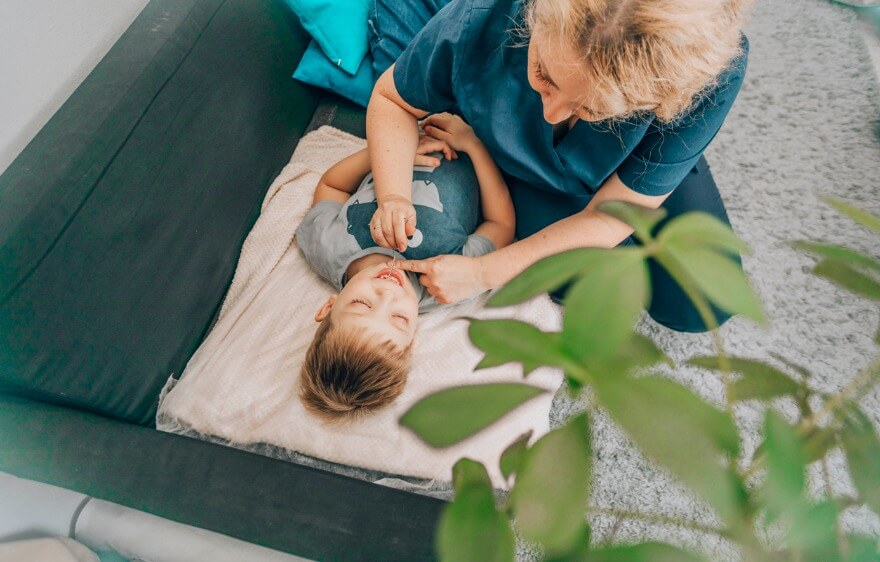As a parent, you do whatever needs to be done to ensure your child’s welfare — a loving home, food, and a safe environment. But there are still so many things that are out of your control, including your child getting sick or developing a medical condition. This can feel even more overwhelming if the diagnosis is one you haven’t heard of, which is often the case for parents encountering Lennox-Gastaut syndrome.
If your little one is living with Lennox-Gastaut syndrome, we’re sharing the following practical guide to help you learn more and be fully engaged with the treatment and care process. We hope you can use this information to help you achieve the best possible outcome and future for your family.
What is Lennox-Gastaut syndrome?
Lennox-Gastaut Syndrome (LGS) is a rare type of epilepsy that occurs in children. It comprises less than 5% of cases of childhood epilepsy, and signs appear during infancy or early childhood. The condition is severe and can cause children to experience different types of seizures, including:
Generalized Seizures: This term describes any type of seizure that develops on both sides of the brain, and can encompass many subtypes of seizures, including tonic-clonic and absence seizures. The other primary type of seizure is a focal onset seizure, which only develops in one part of the brain. In many cases, focal seizures can develop into generalized seizures.
Atonic Seizures: This type of seizure is also sometimes called a “drop attack” because it can cause the child to suddenly fall from a standing or sitting position. They are very quick, usually lasting less than 15 seconds, and cause the child to become unresponsive. Atonic seizures can be both generalized and focal-onset.
Tonic Seizures: Another common seizure type with LGS are tonic seizures. These involve the body stiffening in either one area or throughout the body and are usually very brief, lasting 20 seconds or less.
Tonic-Clonic Seizures: This is a seizure with distinct tonic, or stiffening, and clonic, or rhythmic jerking, phases. When a tonic-clonic seizure occurs, the body, arms, and legs contract, then extend, tremor, and relax. The seizure can last between one and five minutes, and the child comes out of it feeling fatigued, having trouble seeing or speaking, and/or experiencing a headache or body aches.
Absence Seizures: This type of seizure usually occurs in children between the ages of four to 12 and can cause a brief changed state of consciousness. The child keeps their posture, but their mouth or face may twitch, or their eyes blink rapidly for about 30 seconds. After the episode, the child won’t recall what just happened. Absence seizures can occur several times throughout the day and are commonly associated with learning issues and behavioral problems.
Lennox-Gastaut Syndrome Causes
While Lennox-Gastaut syndrome can be caused by many underlying conditions, the exact cause is usually unknown. Examples of medical conditions that may cause a person to develop LGS include reduced oxygen supply before birth, encephalitis, meningitis, tuberous sclerosis, and trauma.
Risk Factors for Lennox-Gastaut Syndrome
LGS is more likely to occur in children who experienced brain malformation while in the womb, gene mutations, brain injury during birth, brain infections, obstructed blood flow to the brain, or any disorder affecting their nervous system. One of the biggest risk factors is a condition called cortical dysplasia, which occurs when the top layer of the brain doesn’t develop neural connections.
Lennox-Gastaut Syndrome Signs and Symptoms
Signs and symptoms of Lennox-Gastaut syndrome will depend on which type of seizure the child is having. The most common include:
Atonic Seizure:
- Drooping eyelids
- Going limp
- Falling
- Jerking
- Loss of consciousness
- Loss of muscle tone
Tonic Seizure:
- Change in awareness
- Stiffening throughout the body
- Falling
- Occurring during sleep
Tonic-Clonic Seizure:
- Stiff muscles
- Groaning
- Falling to the floor
- Loss of consciousness
- Biting the tongue or inside the cheeks
- Arms and legs jerking rapidly
- Losing control of the bladder or bowels
- Light blue coloration if having trouble breathing
Absence Seizure:
- Suddenly stopping all activity and talking
- Staring into space for a few seconds
- Smacking the lips
- Fluttering eyelids
- Eyes turning upwards
Behavioral Problems and Lennox-Gastaut Syndrome
LGS is very frequently related to delayed development and intellectual disability in affected children. This can result in a range of behavioral problems for children with this condition, including hyperactivity, irritability, and learning disability. In more severe cases, LGS can result in autistic symptoms and psychosis. This means psychiatric and behavioral care is typically a key part of the treatment process for children with this diagnosis.
Seizures and related cognitive issues often continue into adulthood. While some adults are able to live independently, many LGS patients will require assistance with daily living into adulthood.
Lennox-Gastaut Syndrome Diagnosis
In order to diagnose Lennox-Gastaut Syndrome, the doctor will conduct an electroencephalogram (EEG) to measure electrical activity in the child’s brain waves. The process involves pasting about 20 electrodes to the scalp to record brain activity, which the doctor will watch on a monitor. This testing is painless. The medical provider may also order additional testing such as blood work, spinal tap, MRI, or CT scan to rule out other medical conditions or tumors.
Lennox-Gastaut Syndrome Treatment
Treatment can be more complex than other seizure disorders because Lennox–Gastaut often does not respond to anti-seizure medications. When this is the case, the doctor may recommend changing the child’s diet to a high-fat, lower-carbohydrate ketogenic diet, which can reduce the frequency of seizures.
As a last resort, the doctor may order surgery to implant a vagus nerve stimulator (VNS) to reduce the frequency of seizures. Another option is a corpus callosotomy. This is a surgery that involves opening the brain to disconnect the corpus callosum, a band of nerve fibers that connect the left and right brain hemispheres. This is only performed on children with the most extreme and severe cases of Lennox-Gastaut Syndrome.
Contact Care Options for Kids for Home Health Care
It can be hard to balance your time between work, home, and caring for a child. That’s why our team of professionals at Care Options for Kids is here to help. We have been enforcing precautionary measures and following the Centers For Disease Control (CDC) guidelines for COVID-19 to ensure the safety and health of our clients and employees.
Our home health care services offer support in the comfort of your home. We refer loving and competent nurses to provide customized care for families — from a few hours a day to around-the-clock supervision. Contact us directly to speak with a home health care professional or request a free in-home assessment. Together we can determine the best plan of action to keep your loved ones happy and healthy.
If you or a loved one are considering Pediatric Home Health Care Services, contact the caring staff at Care Options for Kids. Call today at (888) 592-5855.






